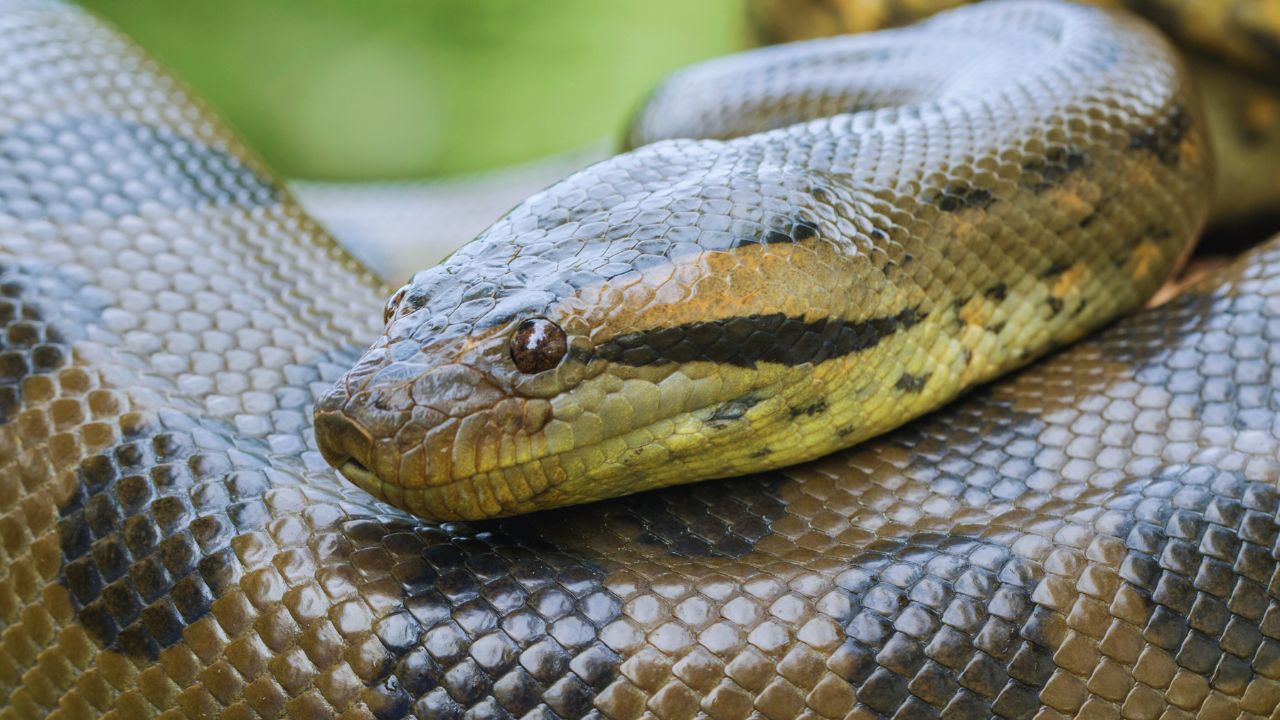Within the huge and varied world of serpents, the Bolivian anaconda is one of the most remarkable species. It is a fascinating and powerful snake. It is a subspecies of the green anaconda and plays a major role in South American ecosystems, especially in Bolivia’s lowlands. In addition to being a representation of a remarkable natural phenomenon, this strong constrictor is an essential part of its natural ecosystems. A thorough examination of the Bolivian anaconda’s physical traits, natural history, behavior, and modern-day struggles is necessary to comprehend this species.

Overview of the Bolivian Anaconda
| Category | Details |
|---|---|
| Scientific Name | Eunectes beniensis |
| Family | Eunectes (Anaconda Family) |
| Size | Typically 3–4 meters, sometimes longer |
| Coloration | Olive-green with black/dark brown blotches |
| Distinctive Features | Eyes and nostrils on top of the head, adapted for aquatic life |
| Habitat | Swamps, marshes, slow-moving rivers, and flooded forests of northern Bolivia |
| Diet | Fish, birds, mammals, and other reptiles |
| Reproduction | Ovoviviparous, live birth with litters of 20–40 offspring |
| Lifespan | 10-20 years |
| Role in Ecosystem | Apex predators regulate populations of various species |
An Overview of the Anaconda Family in Brief
The Eunectes family of anacondas, so named because of its extraordinary size and power, is well-known. This family includes the green anaconda (Eunectes murinus), yellow anaconda (Eunectes notaeus), dark-spotted anaconda (Eunectes deschauenseei), and Bolivian anaconda (Eunectes beniensis). These are the four known species. The biggest and best-known of them is the green anaconda, which is often depicted in mythologies, popular culture, and folklore. Though less well-known, the Bolivian anaconda is nevertheless fascinating and worthy of study.
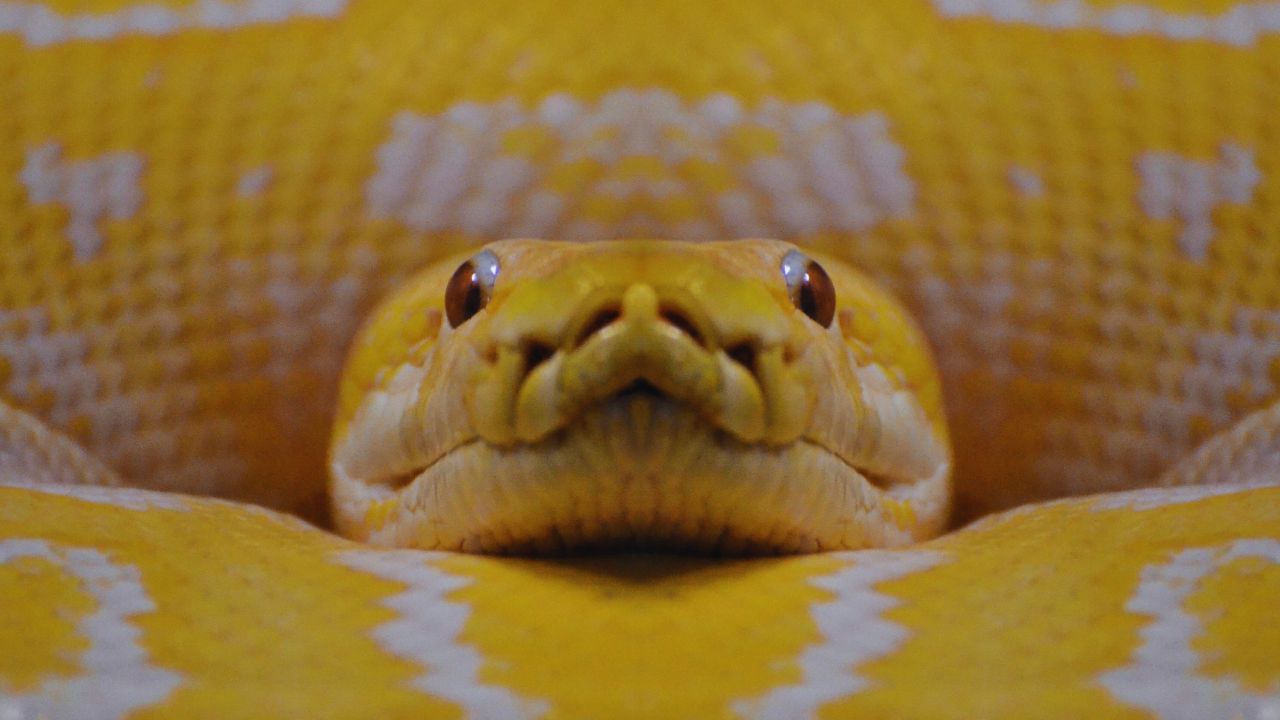
Physical attributes of the anaconda in Bolivia
Like its cousins, the Bolivian anaconda is a non-venomous constrictor. Adults of this sturdy and muscular snake often reach lengths of 3 to 4 meters, while some have the potential to grow much longer. This species is distinguished by its olive-green coloring, which is dotted across its body with black or dark brown spots. With the assistance of these marks, the snake can blend in perfectly with its native habitat’s murky waters and thick flora.
The head of the Bolivian anaconda is one of its most distinguishing characteristics. The snake’s ability to see and breathe while the rest of its body is immersed underwater is due to its adaptation to having its eyes and nostrils on top of its head. Because it allows the anaconda to wait for unwary prey, this characteristic is very beneficial for ambush predators.
Distribution and Habitat
The lowland regions of northern Bolivia, especially the departments of Beni and Pando, are home to the Bolivian anaconda. This area is a component of the larger Amazon Basin, which is a huge and rich natural area renowned for its varied animals and intricate ecosystems. Swamps, marshes, sluggish rivers, and inundated woodlands are all parts of the snake’s habitat and provide it with the water and cover it needs to survive.
Often called the “lungs of the Earth,” the Amazon Basin is one of the planet’s most biodiverse regions. Thousands of plant and animal species call it home, and more are continuously being found. As an apex predator in this rich and intricate ecosystem, the Bolivian anaconda is essential for controlling species numbers and preserving ecological balance.
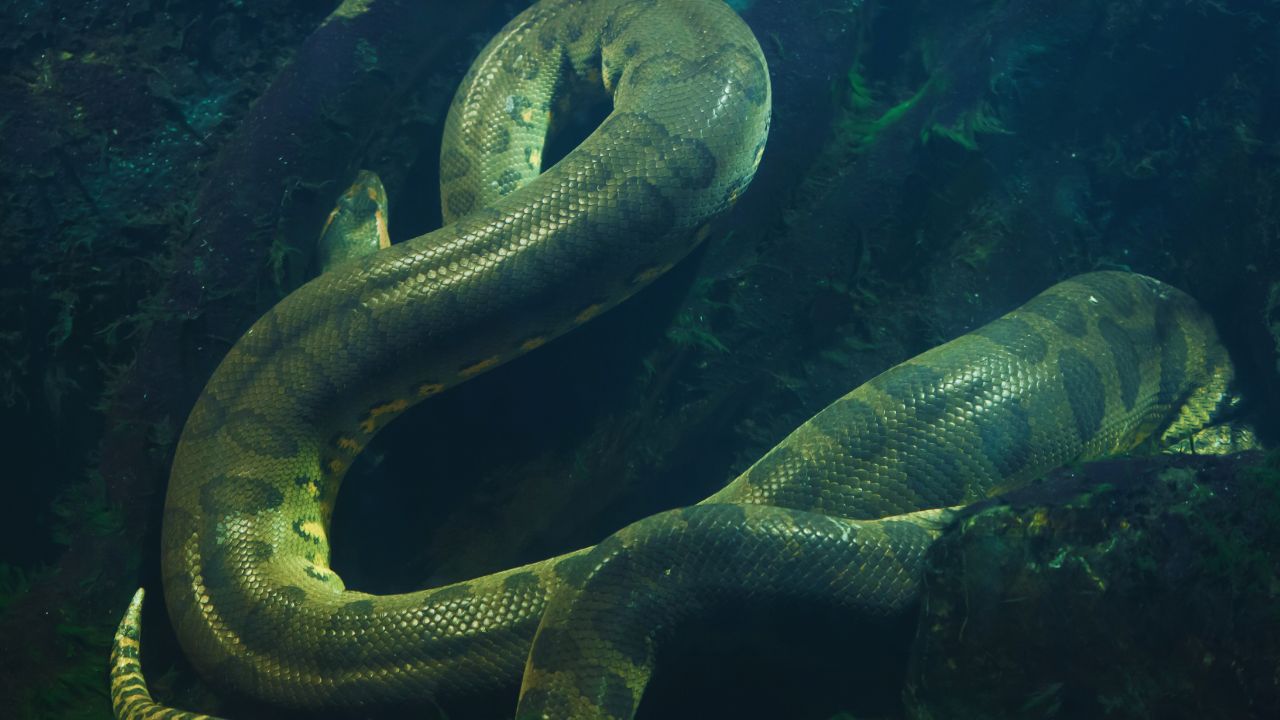
Actions and Nutrition
With the exception of the Bolivian subspecies, anacondas are mostly solitary creatures that only congregate for mating. They also like to hunt at night, being mostly nocturnal creatures. These snakes spend a large portion of their lives in the water, where they have adapted effectively. They can stay underwater for long stretches of time and are proficient swimmers; they only surface to breathe.
In addition to fish, birds, mammals, and sometimes other reptiles, the Bolivian anaconda eats a diverse variety of species. The Bolivian anaconda catches its prey by attacking swiftly, much as other constrictors do, and then coiling its strong body around the victim to smother it. After that, the snake devours its victim whole, beginning with the head. The anaconda has a sluggish metabolism, so after a big meal, it may spend weeks or even months without feeding.
Lifespan and Reproduction
The Bolivian anaconda’s mating season usually falls during the rainy season, when food is more plentiful and water levels are higher. Males are known to fight with one another for females, often participating in a behavior called “breeding balls,” in which many males encircle a single female in an effort to mate. Weeks may pass during this fierce struggle, with the strongest guy emerging victorious.

The female anaconda will carry her babies within her for many months after mating. Anacondas are ovoviviparous, which means that the eggs grow and hatch within the mother’s body, in contrast to many other reptiles. Live young, typically ranging from 20 to 40, will be born into the female’s womb; however, certain litters may have more children. From birth, the young anacondas are self-sufficient, with the innate instincts and physical capabilities required for self-sustenance.
Although some have been reported to live up to 15 or 20 years in captivity, Bolivian anacondas have a maximum lifespan of 10 years in the wild. Predation, food availability, and environmental circumstances are some of the elements that affect their longevity.
The Bolivian Anaconda’s Place in the Ecosystem
The Bolivian anaconda, being the top predator in its environment, plays a vital role. It helps regulate these creatures’ populations by feeding on a range of species, preventing any one species from becoming too dominant. Consequently, this enhances the general well-being and consistency of the environment.
Furthermore, the existence of apex predators such as the anaconda is often suggestive of a thriving ecosystem. The fact that these snakes can survive in certain regions shows that the ecosystem is healthy, has enough resources, and has a well-balanced food web.
But the Bolivian anaconda’s significance goes beyond its direct ecological significance. The indigenous peoples of the Amazon Basin have a strong connection to this snake as part of their cultural and spiritual history. The anaconda is highly revered by many tribes as a potent emblem of tenacity and strength, and it is often depicted in their myths and stories. Thus, conserving biodiversity is not the only goal of protecting anacondas; it also entails maintaining knowledge and cultural practices that have been handed down through the ages.

Key Behaviors and Ecological Role
| Behavior | Details |
|---|---|
| Solitary Lifestyle | Mostly solitary, except during breeding season |
| Nocturnal Activity | Prefers to hunt at night |
| Aquatic Adaptation | Excellent swimmer, spends much time in water |
| Feeding Strategy | Constricts prey, then swallows whole; slow metabolism allows for long periods between meals |
| Reproduction | Males compete in “breeding balls”; females give birth to live young after internal egg development |
| Cultural Significance | Revered by indigenous peoples of the Amazon, it is a symbol of strength and resilience |
| Ecological Impact | Controls prey populations and maintains balance in the ecosystem |
Dangers to Bolivia’s Anaconda
The Bolivian anaconda, despite its impressive size and power, is seriously threatened in the wild by a number of factors. The degradation of habitats is among the most urgent issues. The native habitats of these snakes are becoming more degraded or disappearing entirely due to the growth of human populations and increased agricultural practices. Particularly in the Amazon Basin, deforestation is a serious problem since large tracts of forest are being removed for logging, farming, and infrastructural development.
The illicit wildlife trade poses a serious danger to the Bolivian anaconda. Anacondas are sometimes caught and sold as unusual pets or for their skin, which is used to produce leather items; however, they are not as often targeted as some other species. This trade may cause local population losses and upset the fragile ecosystem’s equilibrium, making it not only cruel but also unsustainable.
The Bolivian anaconda is likewise long-term threatened by climate change. These snakes’ preferred habitats may change due to variations in temperature and precipitation patterns, which would make it more challenging for them to obtain food and procreate. Additionally, their populations may be severely impacted by major weather phenomena like droughts and floods.
Preservation Activities
The Bolivian anaconda has several difficulties; thus, conservation measures are essential to guaranteeing its existence. There are many programs in place right now to preserve these snakes’ habitats and lessen the hazards they encounter.
Preserving the Bolivian anaconda’s native habitat is one of the most crucial conservation techniques. This involves creating and overseeing protected places where the ecosystem of the snake may be conserved and maintained, such national parks and wildlife reserves. There are a number of these locations in Bolivia, such as the very biodiverse Madidi National Park.
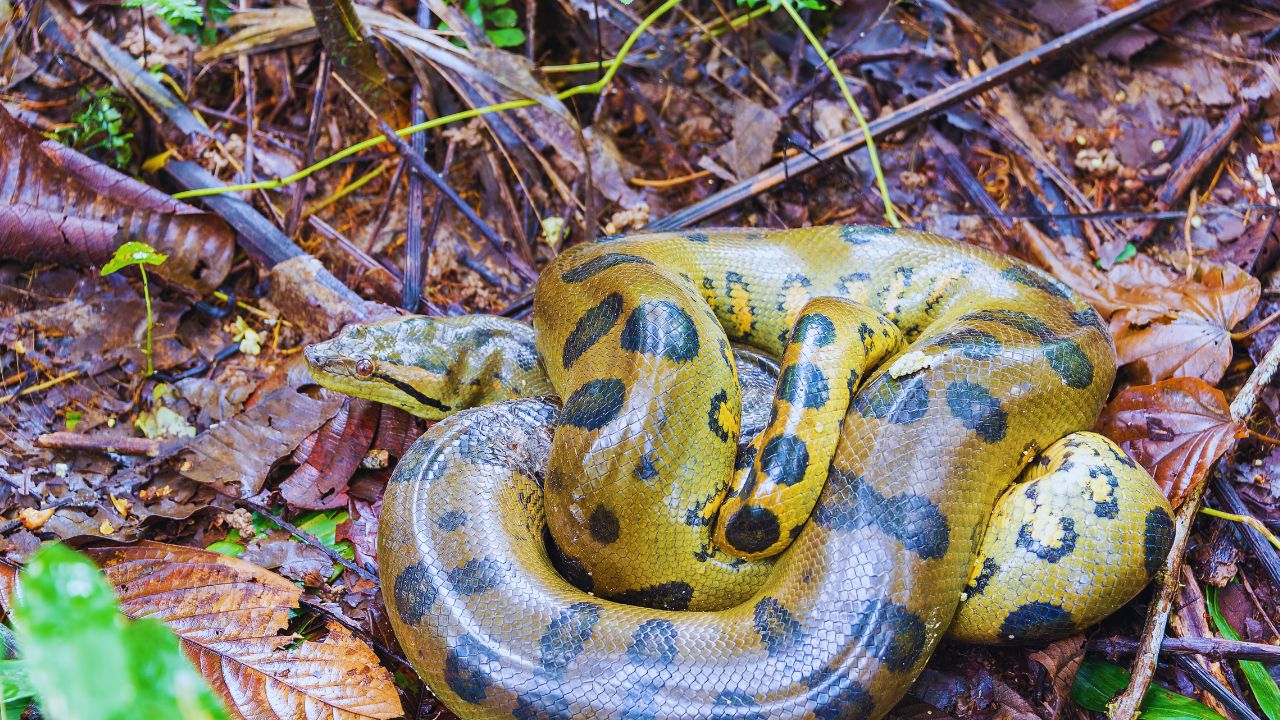
Not only is the environment being protected, but illicit wildlife trafficking is also being opposed. This entails enforcing current regulations more strictly as well as launching public awareness initiatives to lower the demand for exotic pets and animal products. Conservationists aim to lessen the strain on these creatures and contribute to the protection of their populations by bringing attention to the problems associated with the trade in anacondas and other species.
Mitigating climate change is yet another important topic of attention. Even if climate change has an international impact, local efforts may have an impact. To lessen the effects of climate change on the Bolivian anaconda and its habitat, conservationists are trying to encourage sustainable land-use practices and discourage deforestation.
Lastly, the cornerstones of every conservation plan are research and monitoring. Through examining the Bolivian anaconda’s behavior, ecology, and population dynamics, scientists may learn important lessons about the requirements of this species and how best to conserve it. By ensuring that conservation initiatives are founded on reliable scientific principles, this knowledge may subsequently be utilized to guide conservation policies and practices.
Threats and Conservation Efforts
| Threat | Description | Conservation Effort |
|---|---|---|
| Habitat Destruction | Deforestation and agricultural expansion in the Amazon Basin | Protection of natural habitats, establishment of protected areas |
| Illegal Wildlife Trade | Capture for exotic pets and leather trade, leading to population decline | Enforcement of laws, public education campaigns |
| Climate Change | Altered temperature and precipitation patterns, extreme weather events affecting habitat and survival | Sustainable land-use practices and deforestation reduction |
| General Environmental Impact | Disruption of ecological balance due to human activities | Research and monitoring to inform conservation strategies |
The Bolivian Anaconda’s Future
Though there is cause for optimism, the Bolivian anaconda’s future remains unclear. Conservationists, governments, and local communities can work together to save this amazing species and the environments it lives in. But sustained dedication and cooperation are necessary for success, as is an understanding of the significance of protecting not only the anaconda but the whole Amazon Basin food chain.
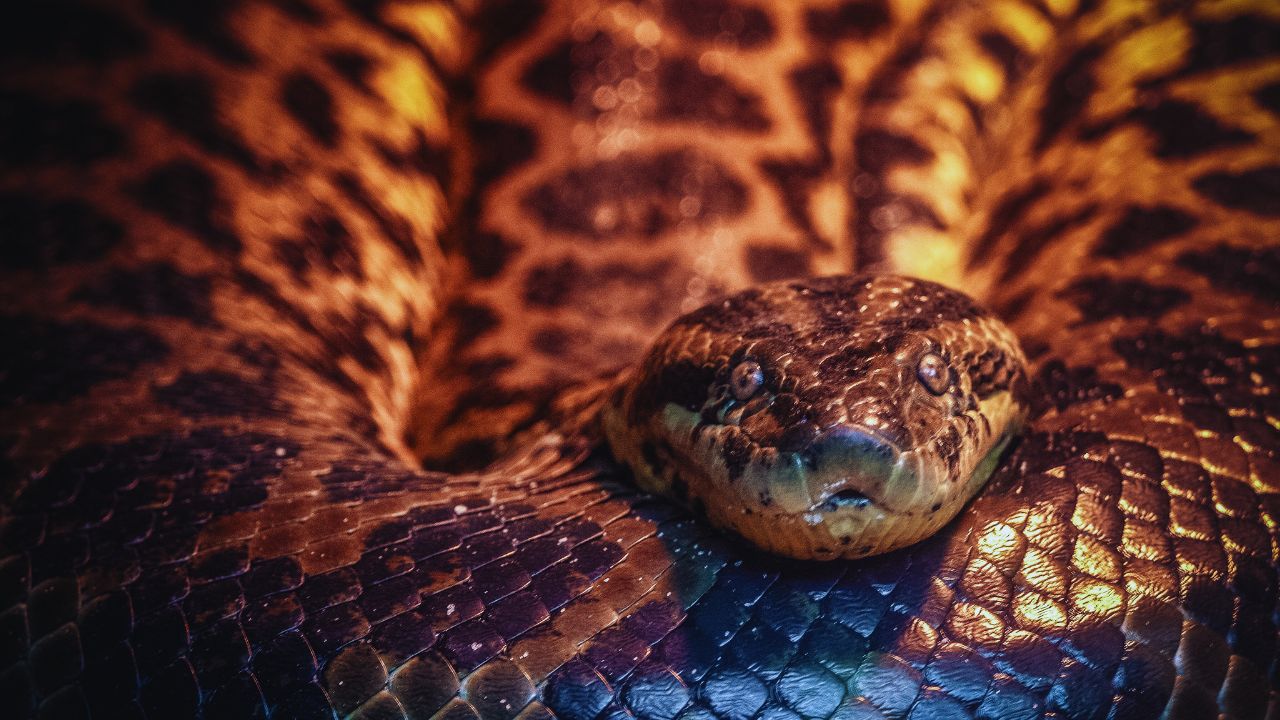
An emblem of the extraordinary variety and intricacy of life in the Amazon is the Bolivian anaconda. It is a magnificent and very powerful creature, but it is also susceptible to human behavior. We can guarantee that future generations will be able to marvel at this gorgeous snake and the diverse ecosystems it calls home by being aware of the issues it confronts and taking action to overcome them.





